domingo, 29 de julho de 2018
Pulsed Plasma Thrusters for Small Satellites -Peter Vallis Shaw - Surrey Space Centre Faculty of Engineering & Physical Sciences University of Surrey -United Kingdom.
Pulsed Plasma Thrusters for Small Satellites Peter Vallis Shaw
Submitted for the Degree of Doctor of Philosophy from the University of Surrey Surrey Space Centre Faculty of Engineering & Physical Sciences University of Surrey -United Kingdom.
Abstract
Since the Russian launch of the Zond-2 satellite in 1964 there have been over fifty years of research dedicated to the understanding of the first electric propulsion device to be flown in space, the Pulsed Plasma Thruster. The Pulsed Plasma Thruster originates from the evolution of the vacuum arc switch, but due to its microsecond operation time, the internal dynamics and nature of operation have remained unclear. The Pulsed Plasma Thruster is generally cheap to manufacture and to operate, which keeps it a popular device to research within institutes worldwide and has contributed to its longevity. As a satellite propulsion device it has unique capabilities that other propulsion systems cannot provide. The thruster operates by accelerating plasma formed in the accelerating electrodes (or nozzle) in short discrete packets of thrust or impulse. The pulsed nature of the thruster means that between pulses energy can be stored in capacitors, ready for the next discharge. The storage of energy over time means the power draw is variable and is only dependant on the frequency that the system is pulsed at. This property of the thruster makes the Pulsed Plasma Thruster extremely versatile, allowing the thruster to perform both velocity correction and control manoeuvres and attitude control manoeuvres. The Pulsed Plasma Thruster is mechanically scalable but the performance of the thruster has been shown to depend linearly on the energy storage ability of the thruster’s capacitor. The work presented here covers two areas. Firstly is the critical analysis of the physical mechanisms that occur within a Pulsed Plasma Thruster through a review of literature, experimentation and the development of a high current plasma flow model. The second area is the design, development, manufacture and evaluation of the Pulsed Plasma Thruster for use on a nanosatellite platform known as the CubeSat. Several novel observations and contributions were made during the critical analysis of the physical mechanisms of the Pulsed Plasma Thruster. The most significant was realising how the erosion of the metal electrodes affected the overall discharge process. It is postulated that the expulsion of material from emission sites (or cathode spots), the ionisation of that material and the resulting freed electrons, create a pinched plasma column between the electrodes. It is postulated that the interaction of the electrode sheath region and the intersecting plasma column cause the current flow to become limited. This was then shown to affect the efficiency with which the stored energy of the capacitor was converted to energy to accelerate the plasma. Understanding this issue is key in improving future designs of the Pulsed Plasma Thruster. The observations and conclusions made during this work were put into practice to create an eight µPPT propulsion module for a 3U CubeSat. Initial results show that a µPPT with a specific impulse of 321s, an impulse bit of 0.56µNs and a mass bit of 0.17µg has been developed. The thruster was developed for two technology demonstration CubeSats. STRaND-1 is a joint collaboration between Surrey Space Centre and Surrey Satellite Technology Limited and UKUBE-1 is a joint collaboration between Surrey Space Centre and the UK Space Agency. Both CubeSats are scheduled for launch late 2011, early 2012. The propulsion module for the STRaND-1 CubeSat will be the first to provide full axis control and the first to provide electric propulsion on this class of satellite, showing the advantages of the Pulsed Plasma Thruster for Small Satellites.
LINK THESIS
http://epubs.surrey.ac.uk/745999/1/Thesis_P_Shaw.pdf
sábado, 28 de julho de 2018
quinta-feira, 26 de julho de 2018
MODELAGEM DE CONVERSORES CC-CC EMPREGANDO MODELO MÉDIO EM ESPAÇO DE ESTADOS Autor: Prof. Ivo Barbi-INEP – Instituto de Eletrônica de Potência UFSC – Universidade Federal de Santa Catarina -BRASIL
MODELAGEM DE CONVERSORES CC-CC EMPREGANDO MODELO MÉDIO EM ESPAÇO DE ESTADOS Autor: Prof. Ivo Barbi
DOWNLOAD DO LIVRO: AQUI :http://ivobarbi.com/novo/wp-content/plugins/download-monitor/download.php?id=159
SUMÁRIO: Capa Cap. I – Análise de Circuitos Lineares Cap. II – Circuito RC Chaveado Cap. III – Circuito RC Chaveado Cap. IV – Conversor CC-CC Abaixador a Capacitor Chaveado Cap. V – Circuito RL Chaveado Cap. VI – Circuito LLR Chaveado Cap. VII – Circuito LC Chaveado Cap. VIII – Circuito VLR Chaveado Cap. IX – Modelagem do Conversor Buck Cap. X – Modelagem do Conversor Boost Cap. XI – Modelagem do Conversor Buck-Boost Cap. XII – Circuito Equivalente do Conversor CC-CC Bidirecional em Regime Permanente Cap. XIII – Modelagem do Conversor Bidirecional Zeta-Sepic Cap. XIV – Modelagem do Conversor Boost em Condução Descontínua Cap. XV – Conversor CC-CC Meia Ponte Modulado em Frequência Cap. XVI – Análise do Erro Cometido ao se Empregar o Valor Médio Em Espaço de Estados Referências Bibliográficas
LINK ORIGINAL
http://ivobarbi.com/modelagem-de-conversores-cc-cc/
quarta-feira, 25 de julho de 2018
CONVERSOR CC-CC DE ALTO GANHO OBTIDO PELA COMBINAÇÃO ENTRE REDES DE INDUTOR E DE CAPACITOR CHAVEADOS Marcos A. Salvador, Thamires P. Horn, Telles B. Lazzarin, Roberto F. Coelho Universidade Federal de Santa Catarina - UFSC, Instituto de Eletrônica de Potência – INEP
CONVERSOR CC-CC DE ALTO GANHO OBTIDO PELA COMBINAÇÃO ENTRE REDES DE INDUTOR E DE CAPACITOR CHAVEADOS
Marcos A. Salvador, Thamires P. Horn, Telles B. Lazzarin, Roberto F. Coelho Universidade Federal de Santa Catarina - UFSC, Instituto de Eletrônica de Potência – INEP, Florianópolis – SC, Brasil
Resumo – Este artigo apresenta um conversor CC-CC elevador não isolado, obtido a partir da combinação de uma rede ativa de indutores chaveados com uma rede passiva de capacitores chaveados. O conversor proposto pode alcançar ganhos de tensão elevados (>10) e caracteriza-se por apresentar reduzido número de componentes e baixos esforços de tensão nos interruptores. O artigo apresenta o princípio de operação do conversor em modo de condução contínua e descontínua, suas principais formas de onda, equacionamento considerando parâmetros parasitas e análise comparativa com outros conversores de similar ganho, previamente publicados na literatura. A validação experimental do conversor proposto é alcançada por meio de um protótipo com potência nominal de 200 W, tensão de entrada de 20 V, tensão de saída de 260 V, frequência de comutação de 50 kHz e rendimento nominal de 94,27%.
Palavras-Chave – Capacitor Chaveado, Conversor CC-CC Elevador de Alto Ganho, Indutor Chaveado.
LINK
https://www.sobraep.org.br/site/uploads/2018/06/rvol23no2p13.pdf
domingo, 22 de julho de 2018
Control and Design of a High voltage Solid State Transformer and its Integration with Renewable Energy Resources and Microgrid System by Xu She -Faculty of North Carolina State University
Control and Design of a High voltage Solid State Transformer and its Integration with Renewable Energy Resources and Microgrid System
by Xu She
A dissertation submitted to the Graduate Faculty of North Carolina State University in partial fulfillment of the requirements for the degree of Doctor of Philosophy Electric Engineering-2013
BIOGRAPHY Xu She was born in Hunan, China. He received the B.S. degree in electrical engineering (major) and B.A. degree in English (minor), with honor from Huazhong University of Science and Technology, China, in 2007. He received his M.S. degree majored in power electronics and motor drive with honor from the same university in 2009. He started to pursue his Ph.D. degree in North Carolina State University in 2009. From August 2009 to July 2010, he has been working on the modeling of the green energy hub and DC microgrid project. Since August 2010, he has been working on the solid state transformer project. He was the team leader of Solid State Transformer (SST) group and Medium Voltage DC (MVDC) transmission group at Future Renewable Electric Energy Delivery and Management (FREEDM) Systems Center. From May to August 2012, he was an intern with high power conversion systems laboratory at GE global research center, US, conducting research on next generation high voltage dc transmission (HVDC) system. His research interests are high power/voltage converters and their industrial applications, and renewable energy resources integration. His role in the first job will be a research engineer (lead professional career band) in high power conversion systems laboratory at GE global research center.
Chapter
1 Introduction
1.1 The distribution transformer 1.1.1 Introduction of the distribution transformer Power generation, transmission, and distribution are the three main constituents of the modern power system, in which the transformer plays a most critical role [1]. Transformers enable high efficiency and long distance power transmission by boosting the voltage to a higher one in the generation side with the so called power transformer. In the distribution system side, this high voltage is stepped down for industrial, commercial, and residential use with the so called distribution transformer. The distribution transformer provides final voltage transformation to the end users in the distribution system, which usually with voltage level less than 34.5kV at high voltage side. At the low voltage side, 120/240V split single phase system and 480V three phase systems are usually adopted in the US. The distribution transformer can be classified from different perspective of view. According to the phase number, it can be classified into three phase transformer and single phase transformer. According to the installation method, it can be classified into pole mounted transformer and pad mounted transformer. The pad mounted transformers are installed for the distribution system with lines located at ground level or underground. While the pole mounted transformers are mounted on a utility pole. According to the insulation medium, it can be classified into liquid-immersed transformer and dry type transformer. The distribution transformers are widely used in various applications, such as renewable energy resources integration, high power charge station, traction system, reactive power compensator, active power filter, and etc., as shown in Figure 1-1[2][3]. It functions as a passive interface between the distribution system and the low voltage loads/sources. Therefore, the voltage quality of the grid cannot be guaranteed if no additionally devices are installed.
LINK:
https://repository.lib.ncsu.edu/bitstream/handle/1840.16/9027/etd.pdf?sequence=1&isAllowed=y
sábado, 21 de julho de 2018
Development of DC to Single-phase AC Voltage Source Inverter with Active Power Decoupling Based on Flying Capacitor DC/DC Converter-Hiroki Watanabe, Tomokazu Sakuraba, Keita Furukawa-2018
Development of DC to Single-phase AC Voltage Source Inverter with Active Power Decoupling Based on Flying Capacitor DC/DC Converter-Hiroki Watanabe, Tomokazu Sakuraba, Keita Furukawa
Abstract—In the present, an power decoupling method without additional component is proposed for a DC to Single-phase AC converter, which consists of a flying capacitor DC/DC converter (FCC) and the voltage source inverter (VSI). In particular, a small flying capacitor in the FCC is used for both a boost operation and a double-line-frequency power ripple reduction. Thus, the DC link capacitor value can be minimized in order to avoid the use of a large electrolytic capacitor. In addition, component design, of e.g., the boost inductor and the flying capacitor, is clarified when the proposed control is applied. Experiments were carried out using a 1.5-kW prototype in order to verify the validity of the proposed control. The experimental results revealed that the use of the proposed control reduced the DC link voltage ripple by 74.5%, and the total harmonic distortion (THD) of the inverter output current was less than 5%. Moreover, a maximum system efficiency of 95.4% was achieved at a load of 1.1 kW. Finally, the high power density design is evaluated by the Pareto front optimization. The power densities of three power decoupling topologies, such as a boost topology, a buck topology, and the proposed topology are compared. As a result, the proposed topology achieves the highest power density (5.3kW/dm3) among the topologies considered herein.
Index Terms—Photovoltaic system (PV), Flying capacitor DC/DC converter, Active power decoupling, Power density design
LINK:http://itohserver01.nagaokaut.ac.jp/itohlab/paper/2018/20180301_IEEE_TPEL/watanabe.pdf
quinta-feira, 19 de julho de 2018
quarta-feira, 18 de julho de 2018
terça-feira, 17 de julho de 2018
I Seminário de Eletrônica de Potência para Energias Renováveis-SEPER2017
SEPER – I Seminário de Eletrônica de Potência para Energias Renováveis A Universidade Federal de Santa Catarina (UFSC), o Instituto Brasileiro de Eletrônica de Potência e Energias Renováveis (IBEPE) e a Fundação de Ensino e Engenharia de Santa Catarina (FEESC) realizarão o SEPER - I Seminário de Eletrônica de Potência para Energias Renováveis. O evento irá aconteceu no Centro de Pesquisa e Capacitação em Energia Solar da UFSC no Sapiens Parque em Florianópolis no dia 22/09/2017 a partir das 9h00. O Centro de Pesquisa e Capacitação em Energia Solar da UFSC está localizado na Av. Luiz Boiteux Piazza, 1302 - Lotes 114/115 - Sapiens Parque - Cachoeira do Bom Jesus - Florianópolis - SC
CONVERSORES CC-CC ISOLADOS TIPO T COM COMUTAÇÃO SUAVE PARA ALTAS TENSÕES Defesa da Tese de DOUTORADO Delvanei G. Bandeira Jr. Orientador: Prof. Ivo Barbi, Dr. Ing Coorientador: Prof. Telles Brunelli Lazzarin, Dr-UFSC-BRASIL
CONVERSORES CC-CC ISOLADOS TIPO T COM COMUTAÇÃO SUAVE PARA ALTAS TENSÕES
Defesa da Tese de Delvanei G. Bandeira Jr.
Orientador: Prof. Ivo Barbi, Dr.
Ing Coorientador: Prof. Telles Brunelli Lazzarin, Dr.
Tese (doutorado) - Universidade Federal de Santa Catarina, Centro Tecnológico. Programa de Pós-Graduação em Engenharia Elétrica, Florianópolis JUNHO 2018-BRASIL
SEMINAR Novel Methods in Control & Monitoring of Photovoltaic Systems-Dr. Mohammadreza Aghaei
In this research, several experimental tests have been designed and performed to examine the quality, accuracy, robustness, reliability, capability and flexibility of different parts of the proposed automatic control system in real and large-scale PV plants. The preliminary results have proven that automating the procedure of PV plants inspection is very promising, being practical, precise and much faster than traditional monitoring methods.
About Dr. Mohammadreza Aghaei Mohammadreza Aghaei has completed his Bachelor degree in Electronics Engineering in 2009 and studied Master of Business Administration (MBA - Project Management). He received the M.S. degree in Electronics Engineering (Solar Cells) from Tenaga Nasional Universiti, Malaysia in 2013 and the Ph.D degree in Electrical Engineering (PV modules and systems) from Politecnico di Milano, Italy in 2016.
segunda-feira, 16 de julho de 2018
Primeiro webinário da SOBRAEP– Associação Brasileira de Eletrônica de Potência-Conversores de Energia a Capacitor Chaveado-Prof. Ivo Barbi-03/08/2018 (sexta-feira) - 14 horas
Primeiro webinário da SOBRAEP– Associação Brasileira de Eletrônica de Potência-Conversores de Energia a Capacitor Chaveado-Prof. Ivo Barbi-03/08/2018 (sexta-feira) - 14 horas
Primeiro webinário da SOBRAEP– Associação Brasileira de Eletrônica de Potência
O primeiro webinário da SOBRAEP terá o tema Conversores de Energia a Capacitor Chaveado e será apresentado pelo Prof. Ivo Barbi no dia 03/08/2018 (sexta-feira) – 14 horas. O Prof. Ivo Barbi tem como uma das grandes conquistas a fundação da SOBRAEP no início da década 1990. O webinário será transmitido a partir do canal da SOBRAEP no Youtube (SOBRAEP ORG) e o acesso a transmissão pode ser feito de duas formas:
1) A partir do site da SOBRAEP (https://www.sobraep.org.br/), em PRÓXIMOS WEBINARS no botão REGISTRE-SE AQUI;
2) A partir do link direto para a transmissão https://www.youtube.com/watch?v=1Jtw4QM-Mvw.
Conversores de Energia a Capacitor Chaveado-Prof. Ivo Barbi-QUANDO-03/08/2018 (sexta-feira) - 14 horas
Ivo Barbi: o pesquisador da eletrônica de potência
“Há 31 anos, quando voltei do meu doutorado na França, o Brasil desconhecia a eletrônica de potência moderna”, lembra o professor Ivo Barbi, escolhido pelo Centro Tecnológico da UFSC para receber o Prêmio Destaque Pesquisador UFSC 50 Anos. Com graduação em Engenharia Elétrica e mestrado na mesma área pela UFSC, doutorado pelo L’institut National Polytechnique de Toulouse, ele contribui para que Santa Catarina e o Brasil sejam referências na área de eletrônica de potência.
Professor titular da UFSC, Ivo Barbi é o fundador do Laboratório de Máquinas Elétricas e Eletrônica de Potência (Lamep), que em 1994 se transformou no Instituto de Eletrônica de Potência (INEP). A mudança no nome marcou também a ampliação do espaço dedicado às pesquisas, conquista de Ivo Barbi e de outros professores do Departamento de Engenharia Elétrica. O laboratório original se desdobrou em oito que contribuem para o desenvolvimento tecnológico da energia elétrica a partir da eletrônica de potência, em atividades de ensino, pesquisa e extensão. “O INEP é o segundo maior em sua área, só perde para outro da Virgínia, nos Estados Unidos.”, orgulha-se o pesquisador.
NA FOTOGRAFIA QUANDO EU VISITEI EM 1990 O INEP EM UM DOS SEMINÁRIOS DE ELETRÔNICA DE POTENCIA,REALMENTE O PROF. IVO BARBI E UM ÍCONE DA ELETRÔNICA DE POTÊNCIA NO BRASIL AMERICA DO SUL E DO MUNDO.
domingo, 15 de julho de 2018
terça-feira, 10 de julho de 2018
Iron Loss and Hysteretic Properties under PWM Inverter Excitation at High Ambient Temperatures Atsushi Yao, Shunya Odawara, Keisuke Fujisaki IEEJ Journal of Industry Applications-JAPAN 2018
Abstract
We experimentally and numerically investigate the magnetic properties of magnetic materials excited by sinusoidal and pulse width modulation (PWM) inverter input at high ambient and room temperatures. We show that the iron losses under sinusoidal and PWM inverter excitations decrease with an increase in temperature. It is found that the temperature dependency of iron loss properties is related not only to major loop but also to minor loops. Furthermore, we derive the numerical expression for the hysteretic properties of the PWM inverter- and sinusoidal-fed ring tests at room temperature and 300°C by using the play model with the Cauer circuit.
LINK
https://www.jstage.jst.go.jp/article/ieejjia/7/4/7_298/_pdf/-char/en
sábado, 7 de julho de 2018
전기회로 (Electrical Circuits, ELE258)-Ho Gi Jung-Associate Professor, Department of Future Automobile Engineering, Hanyang University
LINK ORIGINAL
http://web.yonsei.ac.kr/hgjung/
LINK ELECTRICAL CIRCUITS
http://web.yonsei.ac.kr/hgjung/Lectures/ELE258/index.html
LINK LECTURE Three-phase AC circuit
http://web.yonsei.ac.kr/hgjung/Lectures/ELE258/11%203%EC%83%81%20%EA%B5%90%EB%A5%98%20%ED%9A%8C%EB%A1%9C.pdf
Textbook
Wang Mun-sung, "(Basic) Circuit Theory (2011 Edition)
sexta-feira, 6 de julho de 2018
Magnetic Design for High Temperature, High Frequency SiC Power Electronics Torbjørn Sørsdahl Norwegian University of Science and Technology Department of Electric Power Engineering
Magnetic Design for High Temperature, High Frequency SiC Power Electronics
Torbjørn Sørsdahl
Norwegian University of Science and Technology
Department of Electric Power Engineering
1 Summary
Power electronic components which can operate at high temperatures would benefit a large number of different applications such as in petroleum exploration, aviation and electrical vehicles. Silicon carbide semiconductors have in the recent years been introduced commercially in the market. They are opening up new possibilities to create high temperature devices, due to its superior properties over silicon. Design of high temperature magnetic components is still a tedious process compared to normal temperature levels due to little information and software to simplify this process. The purpose of this thesis is to develop analytical software for high frequency magnetic design in the temperature range from 130°C, and up to 200°C. Care has been taken into developing temperature dependent loss models and thermal design. The software is primarily for inductors, but most of the theory and discussion are also valid for transformers. Prototypes have been built and tested against the software predictions and good correlation has been observed. A brief introduction to magnetic materials that can be used at elevated temperatures have been included focusing on powder cores and ferrites, since other high frequency materials could not operate at 200°C. It was found that for most materials, it is the laminations and binder agents that introduce the temperature limit. Materials are designed for specific temperatures which make it likely that when there is a larger commercial interest for higher temperatures, new materials will be developed. Core characterization of ferrites and powder cores was performed with a Brochause steel tester up to 10 kHz, and the losses up to 100 kHz were measured using an oscilloscope and amplifier approach. The characterization was performed at 20°C 108°C and 180°C. The measurements show that the analytical loss data provided by the manufacturers underestimates the losses in Sendust and MPP materials, while there is a good correlation in High Flux, R-ferrite and N27. New Steinmetz parameters were calculated for MPP and Sendust for 20 kHz. Temperature primarily influences only Sendust up to 180 °C by a factor of 10-20 %, the little temperature dependence is in powder cores due to very high curie temperature. Winding configurations have been investigated, and Litz wire for 200°C do not seem to exist commercially at this date, however wire for 130°C was successfully used in several 180°C experiments, but permanent degradation was observed in wires which had been exposed for several hours. It was found that the insulation in enamel coated round conductors have problems at elevated temperatures under the rated temperature in the areas where the wire was bent, this was not observed in Litz wire. It has been shown that parallel connection of smaller powder cores can in some cases be used to obtain smaller designs with better thermal dissipation than with a single core. Leakage capacitance has been measured in several designs and by inserting an air gap between layers the capacitance was reduced in the same order as a Bank winding. Output filter for dv/dt, Sinus, and a step down converter have been calculated and built. The step down filter has been tested in a buck converter, and compared to analytical data.
LINK
https://pdfs.semanticscholar.org/cd3d/67fc303646f9e09b5d16c9d486a0790090f1.pdf
quinta-feira, 5 de julho de 2018
quarta-feira, 4 de julho de 2018
Development of High Power, High Frequency Magnetics for the Future Power Electronics Applications. Kapila Warnakulasuriya, Carroll & Meynell Transformers Ltd, UK,kapila@carroll-meynell.com Farhad Nabhani, Teesside University, United Kingdom
Development of High Power, High Frequency Magnetics for the Future Power Electronics Applications. Kapila Warnakulasuriya, Carroll & Meynell Transformers Ltd, UK,kapila@carroll-meynell.com Farhad Nabhani, Teesside University, United Kingdom, F.Nabhani@tees.ac.uk Vahid Askari, Teesside University, United Kingdom, v.askari@tees.ac.uk
Abstract
In this paper the optimum design of high power high frequency magnetics is discussed based on a 50kW application operating at 50 kHz. An in depth theoretical explanation on minimizing the losses at high frequency is discussed. A novel approach to the windings that makes the high frequency conductor losses due to proximity effect almost frequency independent is presented. Theoretical explanation of this phenomenon is given. Further how this approach will make it possible to develop a new generation of magnetics that enable power electronics designers to go for significantly high operating frequencies is discussed. The challenge of handling high temperature rise due to high power density of such high power high frequency magnetics is addressed in this paper with a practical solution for that. The theoretical findings are verified based on a set of prototypes developed for a 50kW DC DC converter operating at 50kHz. 1. Introduction Energy efficiency, low noise, reduced mass and dimensions are becoming more and more vital factors in designing magnetics for all kinds of modern power electronics applications such as rolling stock, renewable energy and similar applications. In order to achieve high degree of miniaturization, designers move into significantly high operating (switching) frequencies in the development of modern high power converters and inverters. There is also a clear trend that the operating frequencies used in these applications will continue to increase. Applications like traction, ship and basically any mobile platform with a converter on board require light weight and compact converters to exploit the space available on board more effectively. They often require galvanic isolation for safety or other reasons. Therefore high power high frequency transformers which offer galvanic isolation and a small volume are of increased importance [1]. In addition to the galvanic isolation magnetic components including transformers and inductors perform functions of harmonics filtering, energy storage, level shifting, current sensing and parameter matching for power stages as well as control circuitries in a power converter. They often determine the converter size [2], [3]. It has been a long held view that with a continuous increase in operating and /or switching frequency a continuous decrease in physical size of magnetics would follow. However the heat removal surface of the magnetic components decreases as a result of the higher density design; on the other hand, core and winding loss densities increase correspondingly. Therefore attention needs to be paid to magnetic material selection and associated core loss calculations, especially for high frequency high density magnetics and power converter design [2]. The selection of suitable core material out of several Ferrite grades and Nanocrystalline materials is discussed in this paper with modern approaches of estimating core losses in each type under non sinusoidal excitations of high frequencies such as 50kHz. The advantages of Nanocrystalline that the author has discussed in [11] for 20kHz applications reduce to some extent at this 50kHz application. The effects that high frequency currents such as 50kHz square and triangular waveforms have on conductor losses are explained. A novel winding technique that brings down the significance of proximity effect at high frequencies in transformer windings is presented in this paper. Several core material options such as Ferrite and Air cored inductor are discussed for the series inductor of converters operating in the range of 50kHz. Further a method of minimizing high frequency conductor losses of inductor windings carrying 50kHz currents of significant amplitudes is presented. A novel cooling technique for these compact magnetics with high power densities is discussed. A set of prototypes were developed based on the theoretical findings and tested on a DC/DC converter. Verification of theoretical findings based on practical observations is carried out.
LINK
https://zapdf.com/development-of-high-power-high-frequency-magnetics-for-the-f.html
Performance Comparison of Nanocrystalline Material with Ferrite in a 40kW 20kHz Application Kapila Warnakulasuriya, Carroll & Meynell Transformers Ltd, UK Farhad Nabhani, Teesside University, United Kingdom,
Performance Comparison of Nanocrystalline Material with
Ferrite in a 40kW 20kHz Application
Kapila Warnakulasuriya, Carroll & Meynell Transformers Ltd, UK,kapila@carroll-meynell.com
Farhad Nabhani, Teesside University, United Kingdom, F.Nabhani@tees.ac.uk
Vahid Askari, Teesside University, United Kingdom, v.askari@tees.ac.uk
Abstract
In this paper the performance of Nanocrystalline material in comparison with ferrite is evaluated for a high frequency high power transformer core application. The major advantage of Nanocrystalline material over ferrite is its ability to go for higher design flux densities. However, this is limited with increased losses occurring with the increase of operating frequency. The situation is studied for a 40kW, 20 kHz application. Samples of both versions are developed and a performance evaluation is made on the application. Based on the practical outcome a comparison is made in terms of power density per physical parameters such as weight and volume. The cost and manufacturability are also discussed.
1. Introduction
The transformers in electrical systems are responsible approximately to one third of total network losses. These losses are accounted as power quality costs, costs to society and to the environment itself [19]. With the development of power electronics techniques, pulsewidth modulated inverters (PWM) are widely used to control electrical machines, to feed transformers and to interface renewable energy systems. Also in the future DC electric power systems, high power DC –DC converters will play a major role as they will substitute today’s bulky 50/60 Hz transformers [17], [20]. The main purpose of high frequency operation of such power electronics circuits is to reduce the physical size and cost. The implication being that the losses and efficiency become of paramount importance because of the need to remove heat from the small surfaces [16]. High frequency transformers in such a power electronics circuits constitute a major proportion of the weight and losses. Thus, there is a rapid increase in the industry demand for the best optimization of high frequency transformers. The importance of looking into all the options of optimization become further more significant with the increase of amount of power handled. In this paper the design optimization of a 40kW High frequency transformer operating at 20kHz application is discussed. The losses in the core as well as in the windings are analyzed. Theoretical explanations on the principles used in optimizing the core and winding losses are discussed. Attention is given to make a comparison of the performance of nanocrystalline core and ferrite core. The design approach discussed below is used to arrive at optimal designs with each core material.
http://www.mediafire.com/file/69am6c2642rrvx4/TRANSFORMADOR%20FERRITE.pdf
segunda-feira, 2 de julho de 2018
Grid-tie inverter cooperating with renewable energy sources used for voltage quality improvement Ph.D. THESIS Łukasz Rosłaniec WARSAW UNIVERSITY OF TECHNOLOGY
Grid-tie inverter cooperating with renewable energy sources used for voltage quality improvement
Ph.D. THESIS Łukasz Rosłaniec
WARSAW UNIVERSITY OF TECHNOLOGY - Faculty of Electrical Engineering
Abstract
The dissertation centres on a single-phase voltage-source grid-tie inverter design and construction aimed at interconnecting various small-power renewable energy sources (RES) with an electric power system. It also provides the explanation of application areas for this kind of devices. A great part of the research addresses the problems arising from the influence of small-scale RES on the electric power quality in a low-voltage distribution grid the devices are mostly interconnected with. Therefore, the analysis of standard requirements regarding the interconnection of RES with the grid was included in the study. The thesis also characterizes the range of possibilities which voltage source inverters open up to help maintain power quality around the point of common coupling (PCC) during voltage disturbances caused by the receivers. An overview of a hardware design with an emphasis on output filter and control schemes for currently used single-phase inverters serves as a basis for describing the inventions introduced to the prototype. In the final section the simulation and experimental results of the designed inverter are presented and discussed..
FULL THESIS
https://repo.pw.edu.pl/docstore/download/WUT23082068df74474098925967751c9e84/Ros%C5%82aniec+%C5%81ukasz.pdf
Assinar:
Postagens (Atom)










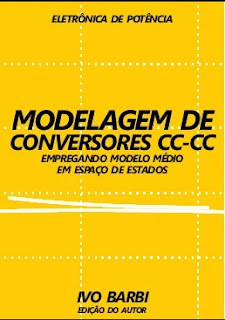




















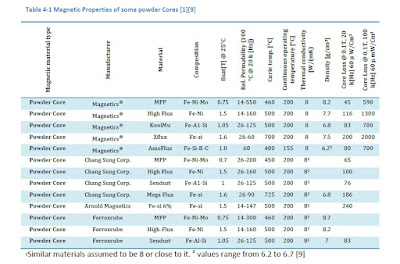


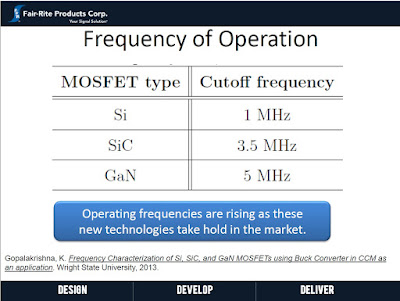
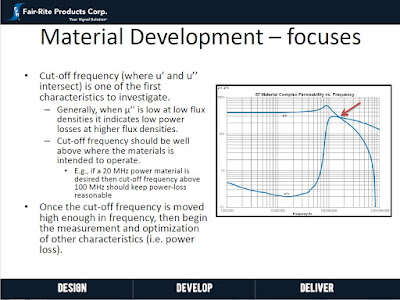




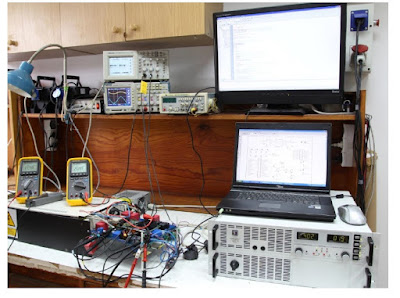
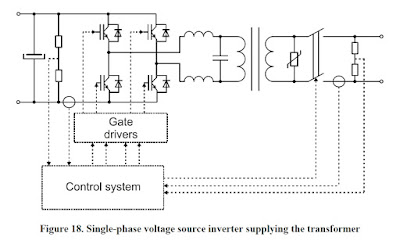
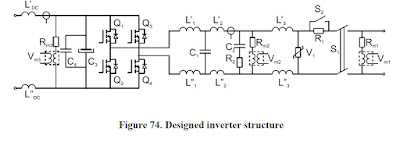

























 JOSIL ARTISTA PLASTICO FORTALEZA CEARA BRASIL AV.HERACLITO GRAÇA 41 TEL(85)32542378
JOSIL ARTISTA PLASTICO FORTALEZA CEARA BRASIL AV.HERACLITO GRAÇA 41 TEL(85)32542378















